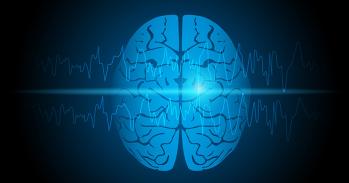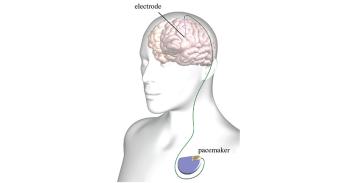
Research raises possibility of devices in the future to help some patients in a vegetative state interact with the outside world.
Research raises possibility of devices in the future to help some patients in a vegetative state interact with the outside world.
These findings mean that, in certain cases of individuals who are vegetative, we might be able to [...] improve their level of communication with the outside world
Dr Tristan Bekinschtein
A patient in a seemingly vegetative state, unable to move or speak, showed signs of attentive awareness that had not been detected before, a new study reveals. This patient was able to focus on words signalled by the experimenters as auditory targets as successfully as healthy individuals. If this ability can be developed consistently in certain patients who are vegetative, it could open the door to specialised devices in the future and enable them to interact with the outside world.
The research, by scientists at the Medical Research Council Cognition and Brain Sciences Unit (MRC CBSU) and the University of Cambridge, is published today, 31 October, in the journal Neuroimage: Clinical.
For the study, the researchers used electroencephalography (EEG), which non-invasively measures the electrical activity over the scalp, to test 21 patients diagnosed as vegetative or minimally conscious, and eight healthy volunteers. Participants heard a series of different words - one word a second over 90 seconds at a time - while asked to alternatingly attend to either the word ‘yes’ or the word ‘no’, each of which appeared 15% of the time. (Some examples of the words used include moss, moth, worm and toad.) This was repeated several times over a period of 30 minutes to detect whether the patients were able to attend to the correct target word.
They found that one of the vegetative patients was able to filter out unimportant information and home in on relevant words they were being asked to pay attention to. Using brain imaging (fMRI), the scientists also discovered that this patient could follow simple commands to imagine playing tennis. They also found that three other minimally conscious patients reacted to novel but irrelevant words, but were unable to selectively pay attention to the target word.
These findings suggest that some patients in a vegetative or minimally conscious state might in fact be able to direct attention to the sounds in the world around them.
Dr Srivas Chennu at the University of Cambridge, said: ”Not only did we find the patient had the ability to pay attention, we also found independent evidence of their ability to follow commands – information which could enable the development of future technology to help patients in a vegetative state communicate with the outside world.
“In order to try and assess the true level of brain function and awareness that survives in the vegetative and minimally conscious states, we are progressively building up a fuller picture of the sensory, perceptual and cognitive abilities in patients. This study has added a key piece to that puzzle, and provided a tremendous amount of insight into the ability of these patients to pay attention.”
Dr Tristan Bekinschtein at the MRC Cognition and Brain Sciences Unit said: “Our attention can be drawn to something by its strangeness or novelty, or we can consciously decide to pay attention to it. A lot of cognitive neuroscience research tells us that we have distinct patterns in the brain for both forms of attention, which we can measure even when the individual is unable to speak. These findings mean that, in certain cases of individuals who are vegetative, we might be able to enhance this ability and improve their level of communication with the outside world.”
This study builds on a joint programme of research at the University of Cambridge and MRC CBSU where a team of researchers have been developing a series of diagnostic and prognostic tools based on brain imaging techniques since 1998. Famously, in 2006 the group was able to use fMRI imaging techniques to establish that a patient in a vegetative state could respond to yes or no questions by indicating different, distinct patterns of brain activity.
This work is licensed under a Creative Commons Licence. If you use this content on your site please link back to this page.





